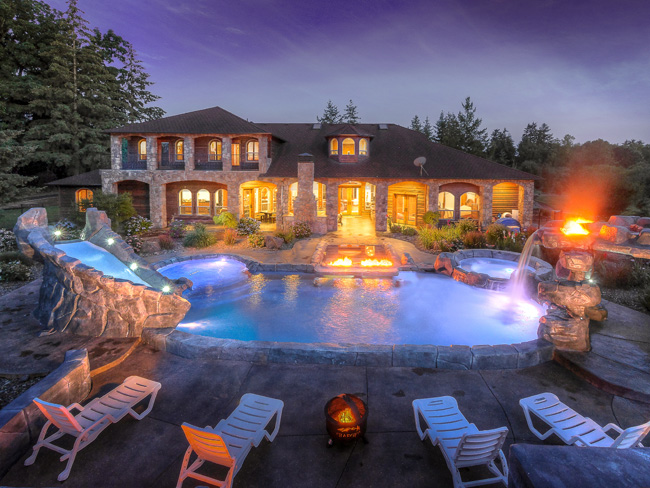Written by Jon Shadel | www.creeksidehomes.net
Andrew Burton knows a thing or two aboutbuilding smarter homes. He started his first company when he was just 19 and founded design-build firm Creekside Homes in 2003. Since then, he and his team have built some truly incredible custom homes in the greater Portland area. And with a background in Energy Star solutions and a partnership with the Energy Trust of Oregon, Andrew has a passion for helping people better understand building science.
Still, when you discuss topics like green building, some peopleget a little antsy. Many even make the assumption that you must sacrifice comfort for sustainability and trade luxury for a smaller environmental footprint. But Andrew says it doesn’t have to be that way. Below, he explains how to get the best of both worlds.
How do you approach sustainability when building a custom home?
 A lot of people come to us and ask, “Do you do green?” But many of them don’t even know what it means to build a green home. Many homebuilders can’t even define that. Our approach is based on building science and helping the homeowner understand how aspects of a green home can benefit them.
A lot of people come to us and ask, “Do you do green?” But many of them don’t even know what it means to build a green home. Many homebuilders can’t even define that. Our approach is based on building science and helping the homeowner understand how aspects of a green home can benefit them.
That means that our goal is to help someone who wants to build a green home understand what’s going to actually work for them, providing real value beyond just the feel-good credits of having done something good for the environment.
So what are some of the benefits of a green home?
We often use the pun “what makes cents” to explain this — focusing on building a home that doesn’t require a lot of dollars to operate. So, the two most important things we talk about when we talk about green homes are indoor air quality being better and better energy efficiency. The third thing on the list that’s important when we talk about green — and it’s not really green, but it ends up coming into the equation — is the comfort and luxury level of a home.
We often think comfort needs to be sacrificed for sustainability. But you’re saying they aren’t mutually exclusive?
What I feel has happened, at least in the early craze to be green, is that people have built ugly, boxy buildings that might be energy efficient, but wouldn’t be a place most people would want to live. To me, homes like that are not comfortable or inspiring places to be.
Instead, I believe we can build smart houses that are high performance, don’t cost much to operate, have a low impact on the environment and still be a place you’d be proud to call home.
What are some of the specific ways you can sustainably add luxury to a home?
In general, a number of components can add luxury to a home: heated floors, heated towel racks or an outdoor living area with lots of bells and whistles [as in the home pictured above] are just a few examples. But, as a design-build firm, we customize every home to the client’s budget and tastes, and seek to build the most sustainable home we can within those parameters. In this particular home, we used reclaimed lumber throughout to match the homeowner’s design tastes and lessen the environmental impact of the home.
How do you begin the design process?
We aim to fuse old world charm with modern technology, and that’s reflected in how we work with clients. We begin the design process by creating a storyboard of pictures that represents your taste. We then begin drafting plans and specs through a series of meetings with you and our interior designer to create a unique, one-of-a-kind home.
Building a custom home can be an overwhelming process; do you have any other tips?
I wrote a book on the whole process titled Building a Quality Custom Home. It walks homeowners through the entire process, and anyone can download the electronic version for free on our website.





